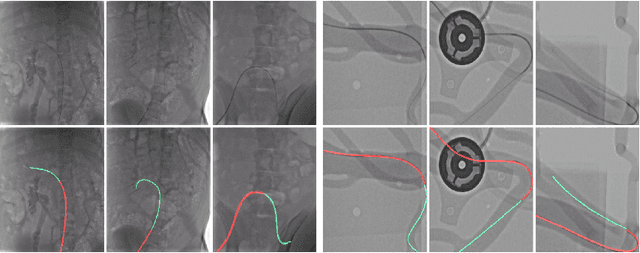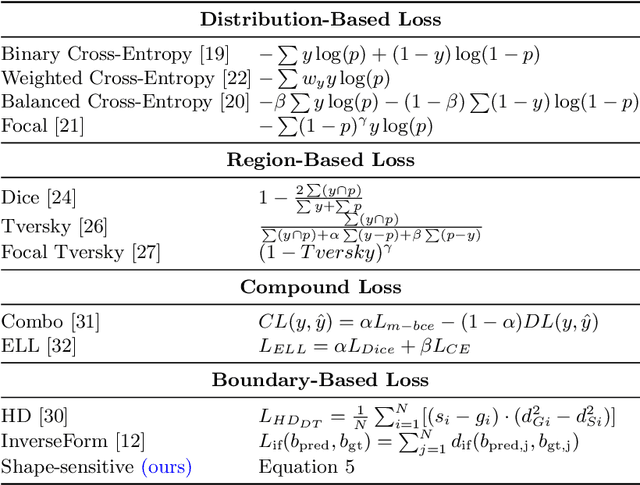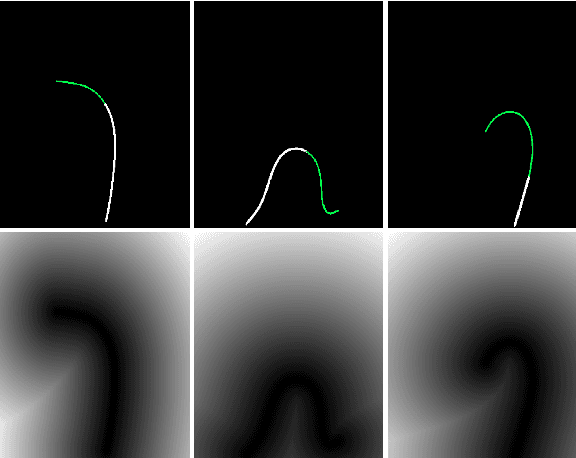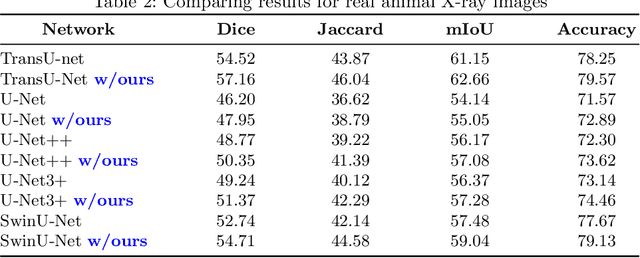Chayun Kongtongvattana
CathAction: A Benchmark for Endovascular Intervention Understanding
Aug 23, 2024Abstract:Real-time visual feedback from catheterization analysis is crucial for enhancing surgical safety and efficiency during endovascular interventions. However, existing datasets are often limited to specific tasks, small scale, and lack the comprehensive annotations necessary for broader endovascular intervention understanding. To tackle these limitations, we introduce CathAction, a large-scale dataset for catheterization understanding. Our CathAction dataset encompasses approximately 500,000 annotated frames for catheterization action understanding and collision detection, and 25,000 ground truth masks for catheter and guidewire segmentation. For each task, we benchmark recent related works in the field. We further discuss the challenges of endovascular intentions compared to traditional computer vision tasks and point out open research questions. We hope that CathAction will facilitate the development of endovascular intervention understanding methods that can be applied to real-world applications. The dataset is available at https://airvlab.github.io/cathdata/.
Shape-Sensitive Loss for Catheter and Guidewire Segmentation
Nov 19, 2023



Abstract:We introduce a shape-sensitive loss function for catheter and guidewire segmentation and utilize it in a vision transformer network to establish a new state-of-the-art result on a large-scale X-ray images dataset. We transform network-derived predictions and their corresponding ground truths into signed distance maps, thereby enabling any networks to concentrate on the essential boundaries rather than merely the overall contours. These SDMs are subjected to the vision transformer, efficiently producing high-dimensional feature vectors encapsulating critical image attributes. By computing the cosine similarity between these feature vectors, we gain a nuanced understanding of image similarity that goes beyond the limitations of traditional overlap-based measures. The advantages of our approach are manifold, ranging from scale and translation invariance to superior detection of subtle differences, thus ensuring precise localization and delineation of the medical instruments within the images. Comprehensive quantitative and qualitative analyses substantiate the significant enhancement in performance over existing baselines, demonstrating the promise held by our new shape-sensitive loss function for improving catheter and guidewire segmentation.
 Add to Chrome
Add to Chrome Add to Firefox
Add to Firefox Add to Edge
Add to Edge